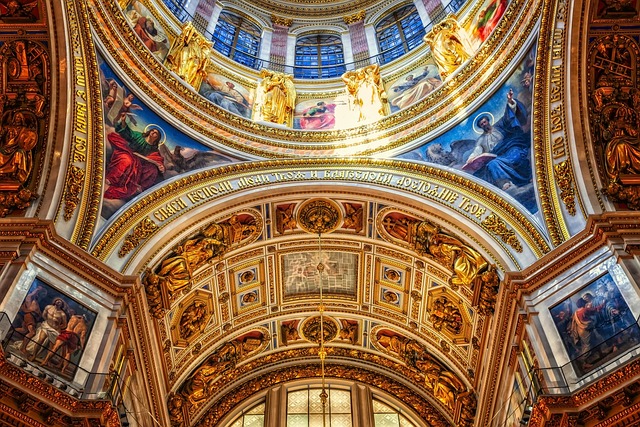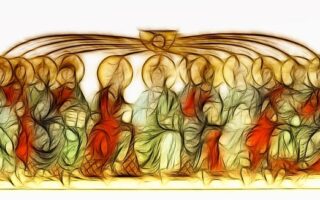Orthodox Christianity and Protestant Christianity are two major branches of Christianity that have distinct beliefs and practices. While both share a common foundation in the teachings of Jesus Christ, they differ in various aspects such as theology, worship practices, and church structure. This introduction aims to provide a brief overview of the key differences between Orthodox and Protestant Christianity.
Table of Contents
History and Origins of Orthodox and Protestant Christianity
Orthodox Vs Protestant: History and Origins of Orthodox and Protestant Christianity
When it comes to Christianity, there are various denominations that have emerged over the centuries. Two of the most prominent ones are Orthodox and Protestant Christianity. These two branches have their own unique histories and origins, which have shaped their beliefs and practices.
Orthodox Christianity traces its roots back to the early days of Christianity. It originated in the Eastern Roman Empire, with its center in Constantinople (modern-day Istanbul). The Orthodox Church sees itself as the continuation of the early Christian Church, preserving the traditions and teachings of the apostles. It places great emphasis on the authority of the Bible, the sacraments, and the teachings of the early Church fathers.
On the other hand, Protestant Christianity emerged as a result of the Protestant Reformation in the 16th century. Led by figures such as Martin Luther, John Calvin, and Huldrych Zwingli, the Protestant movement sought to reform the Catholic Church, which they believed had strayed from the true teachings of Christianity. Protestants emphasize the authority of the Bible alone, rejecting certain Catholic practices such as the veneration of saints and the authority of the Pope.
The split between Orthodox and Protestant Christianity can be traced back to a number of key events and theological differences. One of the main points of contention was the issue of authority. Orthodox Christians believe in the authority of the Church as a whole, with the bishops serving as the successors of the apostles. Protestants, on the other hand, believe in the priesthood of all believers, emphasizing the individual’s direct relationship with God through faith in Jesus Christ.
Another significant difference lies in the understanding of salvation. Orthodox Christians believe in the concept of theosis, which is the process of becoming one with God through participation in His divine nature. They see salvation as a lifelong journey of transformation and sanctification. Protestants, on the other hand, emphasize the concept of justification by faith alone. They believe that salvation is a free gift from God, received through faith in Jesus Christ.
The issue of worship also sets Orthodox and Protestant Christians apart. Orthodox worship is characterized by its rich liturgical tradition, with elaborate rituals, icons, and incense. The Divine Liturgy, the central act of worship in the Orthodox Church, is seen as a participation in the heavenly worship. Protestants, on the other hand, tend to have simpler forms of worship, focusing more on preaching and congregational singing.
Despite these differences, it is important to note that both Orthodox and Protestant Christians share a common belief in the central tenets of Christianity. They both affirm the divinity of Jesus Christ, the Trinity, and the importance of the Bible. They also share a commitment to spreading the Gospel and living out their faith in the world.
In conclusion, the history and origins of Orthodox and Protestant Christianity have shaped their distinct beliefs and practices. While Orthodox Christianity traces its roots back to the early days of the Church, Protestant Christianity emerged as a result of the Protestant Reformation. These two branches differ in their understanding of authority, salvation, and worship. However, they also share common beliefs and a commitment to the core teachings of Christianity. Understanding the history and origins of these denominations can help foster greater appreciation and dialogue among Christians of different traditions.
Key Beliefs and Doctrines in Orthodox and Protestant Traditions

Orthodox Vs Protestant: Key Beliefs and Doctrines in Orthodox and Protestant Traditions
When it comes to Christianity, there are various denominations and traditions that have developed over the centuries. Two of the most prominent branches are Orthodox and Protestant. While they both fall under the umbrella of Christianity, there are significant differences in their key beliefs and doctrines.
Let’s start with the Orthodox tradition. Orthodox Christianity traces its roots back to the early church and places a strong emphasis on tradition and continuity. Orthodox believers hold that the church is the body of Christ and that it has been guided by the Holy Spirit throughout history. They believe in the authority of the Bible, but also give great importance to the teachings of the early church fathers and the decisions of ecumenical councils.
One of the central beliefs in Orthodox Christianity is the doctrine of the Holy Trinity. Orthodox Christians believe in one God who exists in three persons: the Father, the Son (Jesus Christ), and the Holy Spirit. They believe that Jesus Christ is both fully human and fully divine, and that he is the second person of the Trinity. This belief is at the core of Orthodox worship and theology.
Another key aspect of Orthodox belief is the veneration of icons. Icons are religious images that are considered to be windows into the divine. Orthodox Christians believe that through icons, they can connect with the heavenly realm and experience the presence of God. Icons are used in worship and are seen as a means of deepening one’s spiritual life.
Now let’s turn our attention to Protestantism. Protestantism emerged as a response to certain practices and teachings of the Catholic Church during the Reformation in the 16th century. Protestants emphasize the authority of the Bible as the sole source of religious truth and reject the idea of tradition as equal to Scripture.
One of the key beliefs in Protestantism is the doctrine of justification by faith alone. Protestants believe that salvation is a gift from God that is received through faith in Jesus Christ, rather than through good works or religious rituals. This belief is central to Protestant theology and distinguishes it from other Christian traditions.
Another important aspect of Protestant belief is the priesthood of all believers. Protestants reject the idea of a separate clergy class and believe that all believers have direct access to God. They emphasize the individual’s personal relationship with God and encourage each person to study the Bible and interpret it for themselves.
While there are differences between Orthodox and Protestant beliefs, it is important to note that both traditions share a common foundation in the person of Jesus Christ. Both believe in his life, death, and resurrection as the means of salvation. Both also affirm the importance of prayer, worship, and living a life that reflects the teachings of Jesus.
In conclusion, Orthodox and Protestant traditions have distinct beliefs and doctrines that set them apart from each other. Orthodox Christianity places a strong emphasis on tradition, the authority of the early church, and the veneration of icons. Protestantism, on the other hand, emphasizes the authority of the Bible, justification by faith alone, and the priesthood of all believers. Despite these differences, both traditions share a common faith in Jesus Christ and strive to live according to his teachings.
Worship Practices and Rituals in Orthodox and Protestant Churches
When it comes to worship practices and rituals, Orthodox and Protestant churches have some distinct differences. These differences can be seen in the way they approach prayer, the use of icons, and the role of music in their worship services.
In Orthodox churches, prayer is a central part of the worship experience. Orthodox Christians believe that prayer is a way to communicate with God and seek His guidance and blessings. They have a rich tradition of liturgical prayers, which are often recited in a formal and structured manner. These prayers are seen as a way to connect with the divine and participate in the heavenly worship. In contrast, Protestant churches tend to have a more spontaneous and personal approach to prayer. While they may have set prayers or liturgical elements in their services, there is also room for individuals to pray in their own words and express their personal relationship with God.
Another noticeable difference between Orthodox and Protestant worship practices is the use of icons. In Orthodox churches, icons are considered to be windows into the spiritual realm. They are seen as a way to connect with the saints and angels and to be reminded of the presence of God. Icons are often venerated and kissed as a sign of respect and devotion. On the other hand, Protestant churches generally do not use icons in their worship services. They focus more on the written Word of God, with the Bible being the central authority for their faith. While they may have visual elements such as crosses or stained glass windows, the use of icons is not as prominent.
Music also plays a significant role in both Orthodox and Protestant worship, but in different ways. In Orthodox churches, music is seen as a way to enhance the worship experience and create a sense of awe and reverence. Chanting and singing are an integral part of the liturgy, with the congregation often joining in. The music is often traditional and follows a specific melodic structure. In contrast, Protestant churches have a more diverse approach to music. They may have a worship band or choir leading the congregation in contemporary Christian songs. The style of music can vary greatly, from hymns to gospel to contemporary worship songs. The focus is on creating an atmosphere of praise and worship that resonates with the congregation.
While there are differences in worship practices and rituals between Orthodox and Protestant churches, it is important to remember that both traditions seek to honor and worship God. The specific practices and rituals may vary, but the underlying purpose is the same – to connect with the divine and express devotion and gratitude. Whether one prefers the structured prayers and use of icons in Orthodox worship or the more spontaneous and diverse approach in Protestant worship, both traditions offer opportunities for individuals to deepen their faith and experience the presence of God.
In conclusion, the worship practices and rituals in Orthodox and Protestant churches differ in several ways. Orthodox churches emphasize formal and structured prayers, the use of icons, and traditional music, while Protestant churches tend to have a more personal and spontaneous approach to prayer, do not use icons, and have a diverse range of musical styles. However, despite these differences, both traditions share a common goal of seeking to honor and worship God. Ultimately, the choice of worship style is a personal one, and what matters most is the sincerity and devotion with which one approaches their worship.
Differences in Church Structure and Authority between Orthodox and Protestant Denominations
When it comes to Christianity, there are many different denominations that have their own unique beliefs and practices. Two of the most well-known denominations are Orthodox and Protestant. While they both fall under the umbrella of Christianity, there are some key differences in their church structure and authority.
One of the main differences between Orthodox and Protestant denominations lies in their church structure. In the Orthodox Church, there is a hierarchical structure with a clear chain of command. At the top of the hierarchy is the Patriarch or Metropolitan, who is the highest-ranking bishop. Below the Patriarch are the bishops, followed by the priests and deacons. This hierarchical structure ensures that there is a clear line of authority and accountability within the Orthodox Church.
On the other hand, Protestant denominations have a more decentralized structure. There is no central authority figure like the Patriarch in the Orthodox Church. Instead, each individual Protestant denomination is autonomous and has its own governing body. This means that decisions regarding doctrine, worship, and church practices are made at the local level, often by a board of elders or a council of pastors. This decentralized structure allows for more flexibility and adaptability within Protestant denominations.
Another difference between Orthodox and Protestant denominations is the role of tradition and scripture in their respective churches. In the Orthodox Church, tradition plays a significant role in shaping beliefs and practices. The teachings of the early Church Fathers and the decisions of the Ecumenical Councils are highly regarded and considered authoritative. Scripture is also important in the Orthodox Church, but it is interpreted within the context of tradition.
In contrast, Protestant denominations place a greater emphasis on scripture as the ultimate authority. The Protestant Reformation, led by figures like Martin Luther and John Calvin, emphasized the importance of sola scriptura, which means “scripture alone.” Protestants believe that the Bible is the inspired word of God and the final authority in matters of faith and practice. This emphasis on scripture has led to a wide variety of interpretations and denominations within Protestantism.
The differences in church structure and authority between Orthodox and Protestant denominations also extend to the sacraments or ordinances they observe. In the Orthodox Church, there are seven sacraments, including baptism, chrismation, Eucharist, confession, marriage, holy orders, and anointing of the sick. These sacraments are seen as channels of God’s grace and are administered by the clergy.
In contrast, Protestant denominations generally recognize only two sacraments: baptism and the Lord’s Supper (also known as communion or the Eucharist). Some Protestant denominations, like the Anglican Church, also recognize additional sacraments such as confirmation and marriage. However, the understanding and practice of these sacraments can vary greatly among different Protestant denominations.
In conclusion, the differences in church structure and authority between Orthodox and Protestant denominations are significant. The Orthodox Church has a hierarchical structure with a clear chain of command, while Protestant denominations have a more decentralized structure. Tradition and scripture play different roles in shaping beliefs and practices within these denominations. Additionally, the sacraments observed by Orthodox and Protestant denominations also differ. Understanding these differences can help foster dialogue and mutual respect among Christians of different denominations.
Conclusion
In conclusion, the Orthodox and Protestant branches of Christianity differ in their beliefs, practices, and organizational structures. Orthodox Christianity emphasizes tradition, sacraments, and the authority of the Church, while Protestantism focuses on individual interpretation of scripture, salvation through faith alone, and the priesthood of all believers. These differences have led to distinct theological, liturgical, and cultural expressions within each branch.
For licensing reasons, we must provide the following notice: This content was created in part with the help of an AI.


